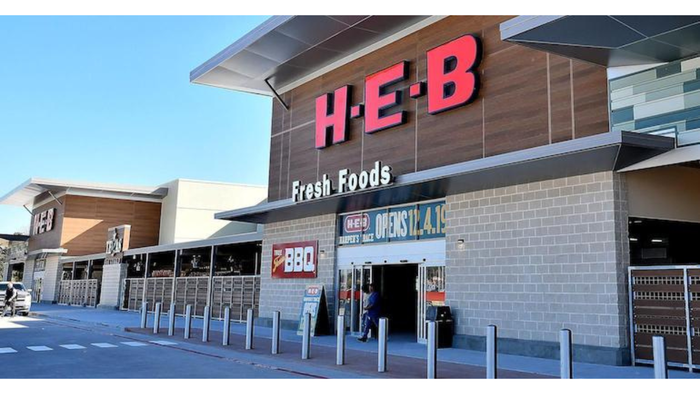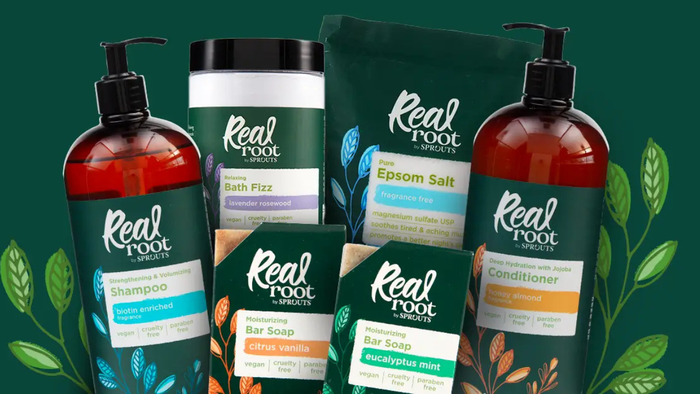Fair for all
January 1, 2018
Fair Trade products may cost a little more, but increasingly consumers are willing to shell out the extra money knowing their purchase can affect change. By Carol Radice Over the past few years, a number of consumer packaged goods companies have set out to prove that when Fair Trade is a part of their corporate mission everyone wins. As a result, what started out as a small social movement has grown tremendously. Estimates show Fair Trade Certified product sales grew 24% in 2010, totaling $170 million. Today more than 9,500 products are Fair Trade Certified and can be found in just about every aisle in the supermarket. Additionally, data from Schaumburg, Ill.-based SPINS shows that growth of sales in mainstream channels is nearly two times greater than in specialty and natural channels, which have historically been the leading sellers of Fair Trade Certified products. Growth is coming in a variety of categories as well. Last year coffee, which is considered the flagship Fair Trade category, grew 33%; ready-to-drink tea and coffee was up 39%; chocolate rose 19% and sweeteners were up 17%. Aromatherapy and body oil sales increased 19% while skin care/body care sales rose 32%. Frozen dessert sales of Fair Trade Certified products grew 4%. Industry observers say that apparel, green peppers, vodka and an array of herbs, spices and extracts are up and coming categories retailers should be keeping an eye on. Observers add that the increased accessibility of Fair Trade products is chiefly responsible for consumers’ elevated awareness of Fair Trade. Fair Trade USA, based in Oakland, Calif., estimates that about 34% of U.S. consumers are aware of Fair Trade. That number is expected to reach 40% by year’s end. “We think it bodes well for the long-term success of Fair Trade that during the past five years awareness levels have more than quadrupled,” says Stacy Geagan Wagner, director of marketing and public relations for Fair Trade USA. More importantly, she and others are especially optimistic of Fair Trade’s future given that once people are made aware, eight out of 10 purchase Fair Trade products. In its 12 years, Fair Trade USA (formerly TransFair USA) has been instrumental in helping suppliers and consumers generate nearly $220 million in additional income to support community development and sustainable agriculture in farming communities across 70 countries. The non-profit organization works with companies to certify products as Fair Trade and audits transactions between U.S. companies and their international suppliers to guarantee that the farmers and workers producing Fair Trade Certified foods were paid fair prices and wages. The organization also educates consumers, works to bring new manufacturers and retailers into the Fair Trade system and provides farmers with business tools, training and resources. For both retailers and manufacturers Fair Trade represents a multitude of positive facets. At Topco that means helping the growers and producers of coffee to put a quality coffee in front of consumers, which is why every coffee under their Full Circle label is Fair Trade Certified. “The message we want to impart on our consumers is that every cup matters,” says Chris Silkworth, senior buyer for the Skokie, Ill.-based company. “By purchasing our coffee people are supporting this sustainable mission and helping organizations such as Fair Trade USA promote wellness, education and infrastructure initiatives, and most importantly, teach farmers how to increase yield and quality in tandem.” I scream, you scream On the manufacturers’ side Ben & Jerry’s has pledged to convert its frozen dessert line to Fair Trade Certified by 2013. In a little more than a year, 13 of the company’s flavors now contain Fair Trade Certified ingredients. Looking for a way to highlight Fair Trade even further, the South Burlington, Vt.-based company recently teamed with television personality Jimmy Fallon to launch Late Night Snack, made with Fair Trade vanilla and cocoa. “There is a growing interest from people who want to know where their food comes from, how it’s produced and who will benefit or be hurt by their purchase,” says Sean Greenwood, global public relations director for Ben & Jerry’s. “For our part, we are trying to be more conscious of how our actions affect others and to work cooperatively to make a positive impact in people’s lives.” Having a preset price for a commodity is an important part of this program adds Greenwood, because it offers farmers financial stability from which they can grow their business. For now Ben & Jerry’s is using Fair Trade ingredients such as coffee, vanilla and chocolate, however they are looking to expand the list. Through the help of Fair Trade USA, Ben & Jerry’s recently identified a Peruvian farmer that could produce Fair Trade coconut for them. “In this case no one was growing Fair Trade Certified coconut, but because of our interest in offering it we were able to get a new farmer into the program which will hopefully make a positive impact on his community,” says Greenwood. Most known for its chocolate bars, Green & Black’s, based in Hanover, N.J., also holds the distinction of being the only organic and Fair Trade Certified chocolate brand. Robert Grgurev, senior associate brand manager for Green & Black’s, says he is happy awareness levels of Fair Trade have risen, but adds that relatively speaking, it is still somewhat unknown to most consumers. “The highest awareness right now is among natural consumers,” he says. “There is still a lot of work that needs to be done to educate mainstream shoppers on how Fair Trade works and how it impacts the farming communities that are part of the program.” That impact can be significant. For example this past spring several Green & Black’s officials headed to the Dominican Republic for a two-week community outreach program bringing enough manpower to help build a gravity fed water system for some of their cocoa farmers. The new system provides easier access for the people in these communities to the river for water. Funds generated from the premiums companies are charged for Fair Trade Certified ingredients helped pay for this project. The way the program is set up, Fair Trade farmers and workers decide democratically how to invest Fair Trade premiums to develop their communities. According to Grgurev, Green & Black’s is the largest importer of cocoa from the Dominican Republic and as such it is important to the company to ensure these farming communities are sustainable. “Fair Trade is about more than just putting a logo on a package–it’s about making a material impact in people’s lives,” says Grgurev. Another company sharing that sentiment is Green Mountain Coffee Roasters (GMCR) based in Waterbury, Vt. According to Ed Canty, the Fair Trade organic coffee buyer for GMCR, the company supports Fair Trade because it is one way it can help small-scale coffee farmers invest in the quality of their coffee and the quality of life in their communities. “It also means we can continue to deliver high quality coffee that is sourced in a socially and environmentally responsible way,” says Canty. “We believe that choosing Fair Trade is an easy way for coffee drinkers to enjoy great coffee and have a significant impact on farming communities around the world.” Since 2000, when GMCR’s coffees under the Green Mountain Coffee brand were first certified, Fair Trade organic coffee has been one of the fastest-growing segments of its business. In 2002, GMCR began sourcing and roasting Fair Trade Certified organic coffees for Newman’s Own Organics and today, it offers one of the largest selections of double-certified Fair Trade organic coffees in the country. In fiscal 2010, Fair Trade Certified coffees represented approximately 28% of overall coffee pounds shipped by GMCR. In that same period, the company sold over 17 million pounds of Fair Trade Certified coffees, up more than 42% from 2009. In 2009, GMCR’s Fair Trade purchases delivered over $1.6 million in Fair Trade premiums for community development to coffee farmers and their families. To date, the Fair Trade premiums GMCR has paid out have helped fund more than a dozen projects in 14 countries that are now helping more than 18,000 families improve their quality of life. According to Canty, one of the Sumatran farming communities that supply GMCR with coffee beans recently purchased weed wackers with their Fair Trade premiums. The new equipment helped the producers reclaim abandoned farmland overtaken with weeds. In a community in Peru, the Fair Trade premium helped farmers start a compost business in addition to growing coffee. “For Green Mountain Coffee, Fair Trade has been a win-win-win–a win for coffee farming families, a win for our company and a win for our customers,” says Canty. “By helping coffee producers achieve economic security and diversification, we are also strengthening coffee communities, offering better quality coffee to our customers and growing our business in the process.” Say it loud and clear As with any movement in its infancy, increasing awareness is critical. To this end, Fair Trade USA recently worked with a national grocery retailer to gauge the sales lift that occurs when Fair Trade products were prominently merchandised. The retailer used Fair Trade USA’s new POS branding materials, which feature the face of a child affected by Fair Trade along with a message letting consumers know how their purchase of Fair Trade helps keep kids in school. The messaging was featured throughout multiple locations in the store in key categories such as coffee, cocoa, baking ingredients, spices and wine. According to Geagan Wagner, sales of Fair Trade products increased nearly 40% during the test. “Mainstream retailers have been instrumental in helping to grow this movement and promoting our tagline that ‘every purchase matters.’ To take things to the next level we’d like to see more retailers highlight Fair Trade products and their message,” she says. Grgurev and others agree that the key to increasing awareness of Fair Trade is in simplifying the message. He points out that retailers can also help accelerate awareness by only collaborating with legitimate companies who offer certified Fair Trade products. What is Fair Trade? A global movement to alleviate poverty in farming communities around the world. That is the simplest way to describe Fair Trade. “Fair Trade is a market-based approach to sustainable development, seeking to empower millions of disadvantaged producers worldwide while protecting the environment for future generations,” says Stacy Geagan Wagner, director of marketing and public relations for Fair Trade USA, based in Oakland, Calf. “Fair Trade also empowers U.S. consumers to make a difference in the world by simply adjusting their shopping list, giving industry an incentive to do the right thing.” Here are some other facts about Fair Trade: For consumers, Fair Trade offers a way to help reduce poverty through their everyday shopping. For farmers and workers in developing countries, it offers better prices, improved terms of trade and the business skills necessary to produce high-quality products that can compete in the global marketplace. Through vibrant trade, farmers and workers can improve their lives and plan for their futures. Globally, the Fair Trade network certifies coffee, tea and herbs, cocoa, fresh fruit and vegetables, sugar, beans and grains, flowers, nuts, oils and butters, honey and spices, wine and apparel. In addition, certified ingredients are now used in ready-to-drink beverages, body care products and spirits. In the U.S., Fair Trade Certified products are available in more than 60,000 retail locations. Fair Trade principles include:
Fair prices and credit
Fair labor conditions
Direct trade
Democratic decision making
Community development
Encouraging environmental sustainability
About the Author
You May Also Like



.png?width=700&auto=webp&quality=80&disable=upscale)
